Do you have a question about the Fronius TPS 4000 and is the answer not in the manual?
Initiates the welding process.
Indicates the robot's readiness for welding operations.
Details various operational modes for welding.
Explains the CC/CV option and its associated input signals.
Guides on setting welding parameters using input signals.
Covers TIG, CMT/special processes, and related signals.
Details wire retraction and workpiece contact detection.
Signals for torch cleaning, fault reset, and job selection.
Signals for program selection, simulation, and disabling functions.
Signals for full power range, burn-back disable, and command values.
Details for arc length, pulse, burn-back, and DPC command values.
Signals for cold wire feed and external box configuration.
Signals for selecting DC/AC and DC-/DC+ operating modes.
Signals for cap shaping, pulse disable, and pulse range selection.
Signals for setting main current and base current in TIG pulse mode.
Signals for duty cycle, wirefeed speed, and disabling functions.
Signal to activate high frequency ignition.
Signals for pulse, range, main current, and external parameter in HAP mode.
Signals for base current, duty cycle, and disable functions in HAP mode.
Signal to activate high frequency ignition in HAP mode.
Signals indicating arc stability, limits, process activity, current, and collision.
Signals for power source readiness, communication, and error reporting.
Signals for stick control, robot access, wire availability, and timeouts.
Signals transmitting real-time welding voltage, current, motor, arc length, and wire speed.
Comprehensive list of error codes and their remedies.
Example list of welding programs with filler metal, wire diameter, and gas.
Guidance on timing "Job/Program" and "Welding start" signals.
Recommended time gaps for job/program selection scenarios.
Instructions for setting time gaps using gas pre-flow time.
Initiates the welding process.
Indicates the robot's readiness for welding operations.
Details various operational modes for welding.
Explains the CC/CV option and its associated input signals.
Guides on setting welding parameters using input signals.
Covers TIG, CMT/special processes, and related signals.
Details wire retraction and workpiece contact detection.
Signals for torch cleaning, fault reset, and job selection.
Signals for program selection, simulation, and disabling functions.
Signals for full power range, burn-back disable, and command values.
Details for arc length, pulse, burn-back, and DPC command values.
Signals for cold wire feed and external box configuration.
Signals for selecting DC/AC and DC-/DC+ operating modes.
Signals for cap shaping, pulse disable, and pulse range selection.
Signals for setting main current and base current in TIG pulse mode.
Signals for duty cycle, wirefeed speed, and disabling functions.
Signal to activate high frequency ignition.
Signals for pulse, range, main current, and external parameter in HAP mode.
Signals for base current, duty cycle, and disable functions in HAP mode.
Signal to activate high frequency ignition in HAP mode.
Signals indicating arc stability, limits, process activity, current, and collision.
Signals for power source readiness, communication, and error reporting.
Signals for stick control, robot access, wire availability, and timeouts.
Signals transmitting real-time welding voltage, current, motor, arc length, and wire speed.
Comprehensive list of error codes and their remedies.
Example list of welding programs with filler metal, wire diameter, and gas.
Guidance on timing "Job/Program" and "Welding start" signals.
Recommended time gaps for job/program selection scenarios.
Instructions for setting time gaps using gas pre-flow time.
| Output Current Range | 5 - 400 A |
|---|---|
| Input Voltage | 3 x 400 V |
| Protection Class | IP23 |
| Output Current Range (MIG/MAG) | 5 - 400 A |
| Output Current Range (TIG) | 5 - 400 A |
| Output Current Range (MMA) | 5 - 400 A |
| Mains Frequency | 50-60 Hz |
| Rated Input Frequency | 50-60 Hz |
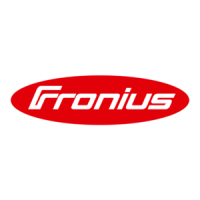


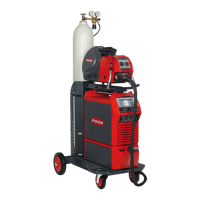

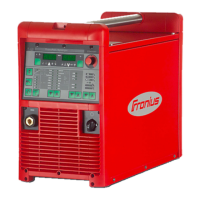
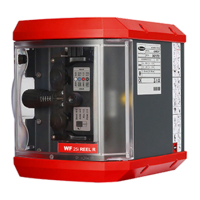
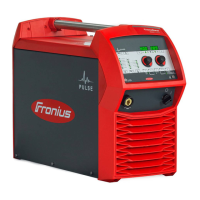



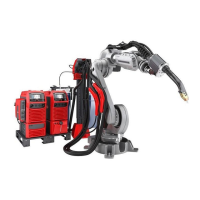
